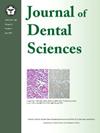Investigating the relation among the needle insertion plane, occlusal plane, mandibular foramen, and mandibular lingula for inferior alveolar nerve block
IF 3.1
3区 医学
Q1 DENTISTRY, ORAL SURGERY & MEDICINE
引用次数: 0
Abstract
Background/purpose
The success rates and incidence of positive blood aspiration during inferior alveolar nerve blocks (IANB) vary. Understanding the relative positions of the mandibular foramen (MF), mandibular lingula (ML), and occlusal plane (OP) is crucial for the effectiveness and safety of IANB. This study evaluates the relationship among needle insertion levels, ML, and OP for IANB.
Materials and methods
Cone-beam computed tomography images of 90 participants were analyzed to measure ML and MF distances relative to OP. Participants were categorized into skeletal classes (I, II, and III). The distances from ML to the anesthetic needle positioned 5, 6, 7, 8, 9, and 10 mm above OP were assessed. Comparisons based on gender and skeletal classes were conducted, and correlations among variables were evaluated.
Results
The MF and ML were located below OP in 72 (40.0 %) and 5 (2.8 %) sides, respectively. Class II had the highest proportion of MF below OP (16.67 %), followed by Class III (13.33 %) and Class I (10 %). When the needle was inserted 5 mm and 10 mm above OP, ML was below the insertion plane in 27 (15 %) and 116 (64.4 %) sides, respectively. ML-OP distances were significantly greater in Class III (9.75 mm) and Class I (9.62 mm) than in Class II (7.29 mm).
Conclusion
Class II exhibited significantly smaller ML-OP and MF-OP distances than Class I and Class III. The needle should be inserted parallel to OP and positioned approximately 6–7 mm above OP for improved safety and anesthesia efficacy.
探讨下牙槽神经阻滞中针插入面、咬合面、下颌孔、下颌舌的关系
背景/目的下肺泡神经阻滞(IANB)的成功率和阳性吸血发生率各不相同。了解下颌孔(MF)、下颌舌(ML)和咬合平面(OP)的相对位置对IANB的有效性和安全性至关重要。本研究评估IANB的针头插入水平、ML和OP之间的关系。材料和方法对90名参与者的锥形束计算机断层扫描图像进行分析,测量相对于op的ML和MF距离。参与者被分为骨骼类(I, II和III)。评估从ML到位于OP上方5、6、7、8、9和10 mm的麻醉针的距离。进行了基于性别和骨骼类别的比较,并评估了变量之间的相关性。结果MF和ML分别有72侧(40.0%)和5侧(2.8%)位于OP以下。MF低于OP的比例以II类最高(16.67%),其次是III类(13.33%)和I类(10%)。当针在OP上方5 mm和10 mm时,ML分别在27侧(15%)和116侧(64.4%)位于插入平面以下。III类(9.75 mm)和I类(9.62 mm)的ML-OP距离明显大于II类(7.29 mm)。结论ⅱ类的ML-OP和MF-OP距离明显小于ⅰ类和ⅲ类。为提高安全性和麻醉效果,针头应与OP平行插入,并放置在OP上方约6 - 7mm处。
本文章由计算机程序翻译,如有差异,请以英文原文为准。
求助全文
约1分钟内获得全文
求助全文
来源期刊

Journal of Dental Sciences
医学-牙科与口腔外科
CiteScore
5.10
自引率
14.30%
发文量
348
审稿时长
6 days
期刊介绍:
he Journal of Dental Sciences (JDS), published quarterly, is the official and open access publication of the Association for Dental Sciences of the Republic of China (ADS-ROC). The precedent journal of the JDS is the Chinese Dental Journal (CDJ) which had already been covered by MEDLINE in 1988. As the CDJ continued to prove its importance in the region, the ADS-ROC decided to move to the international community by publishing an English journal. Hence, the birth of the JDS in 2006. The JDS is indexed in the SCI Expanded since 2008. It is also indexed in Scopus, and EMCare, ScienceDirect, SIIC Data Bases.
The topics covered by the JDS include all fields of basic and clinical dentistry. Some manuscripts focusing on the study of certain endemic diseases such as dental caries and periodontal diseases in particular regions of any country as well as oral pre-cancers, oral cancers, and oral submucous fibrosis related to betel nut chewing habit are also considered for publication. Besides, the JDS also publishes articles about the efficacy of a new treatment modality on oral verrucous hyperplasia or early oral squamous cell carcinoma.
 求助内容:
求助内容: 应助结果提醒方式:
应助结果提醒方式:


